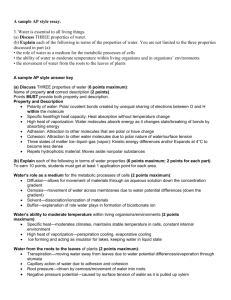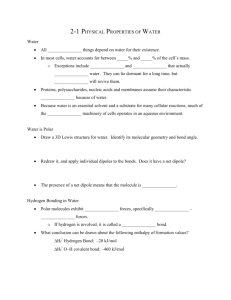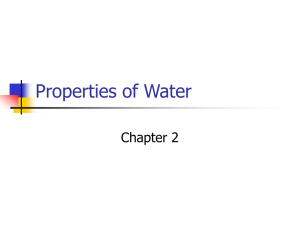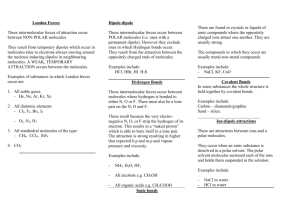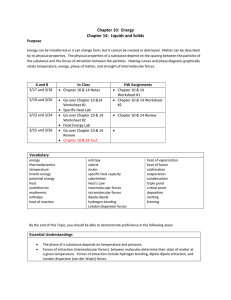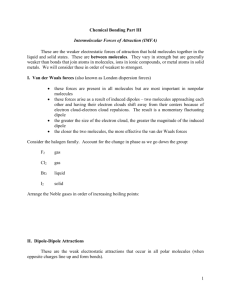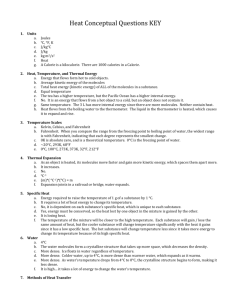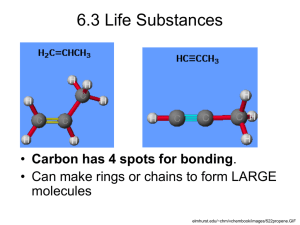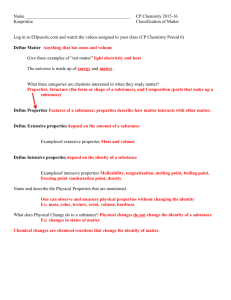Standard CH.5 a, b, c The student will investigate and understand
advertisement
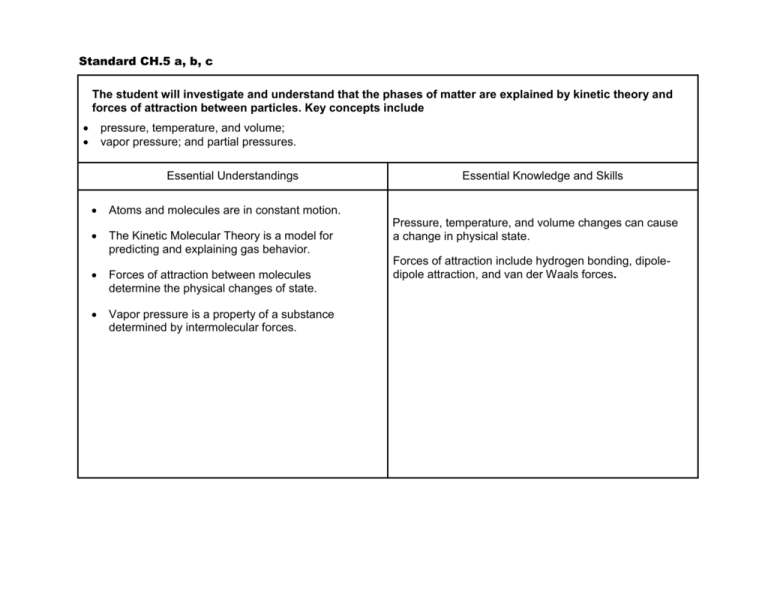
Standard CH.5 a, b, c The student will investigate and understand that the phases of matter are explained by kinetic theory and forces of attraction between particles. Key concepts include pressure, temperature, and volume; vapor pressure; and partial pressures. Essential Understandings Atoms and molecules are in constant motion. The Kinetic Molecular Theory is a model for predicting and explaining gas behavior. Forces of attraction between molecules determine the physical changes of state. Vapor pressure is a property of a substance determined by intermolecular forces. Essential Knowledge and Skills Pressure, temperature, and volume changes can cause a change in physical state. Forces of attraction include hydrogen bonding, dipoledipole attraction, and van der Waals forces. Standard CH.5 d, e, f, g, h The student will investigate and understand that the phases of matter are explained by kinetic theory and forces of attraction between particles. Key concepts include a. b. c. d. phase changes; molar heats of fusion and vaporization; specific heat capacity; 4.solutions; colligative properties. Essential Understandings Solid, liquid, and gas phases of a substance have different energy content. Specific amounts of energy are absorbed or released during phase changes. Specific heat capacity is a property of a substance. Solutions can exist in any state or combination of states. Polar substances dissolve ionic or polar substances; nonpolar substances dissolve nonpolar substances. The number of solute particles changes the freezing point and boiling point of a pure substance. Essential Knowledge and Skills Solutions can be solute/solvent, gas/gas, gas/liquid, liquid/liquid, solid/liquid, gas/solid, liquid/solid, and solid/solid. Boiling point of liquids is affected by changes in atmospheric pressure. Freezing point of liquids is affected by the presence of certain solutes. Heating curve (temperature vs. time). Calculate energy changes using specific heat capacity. Calculate energy changes using molar heat of fusion and molar heat of vaporization. Interpret a phase diagram of water. Perform calorimetry calculations. Recognize polar molecules and non-polar molecules.
